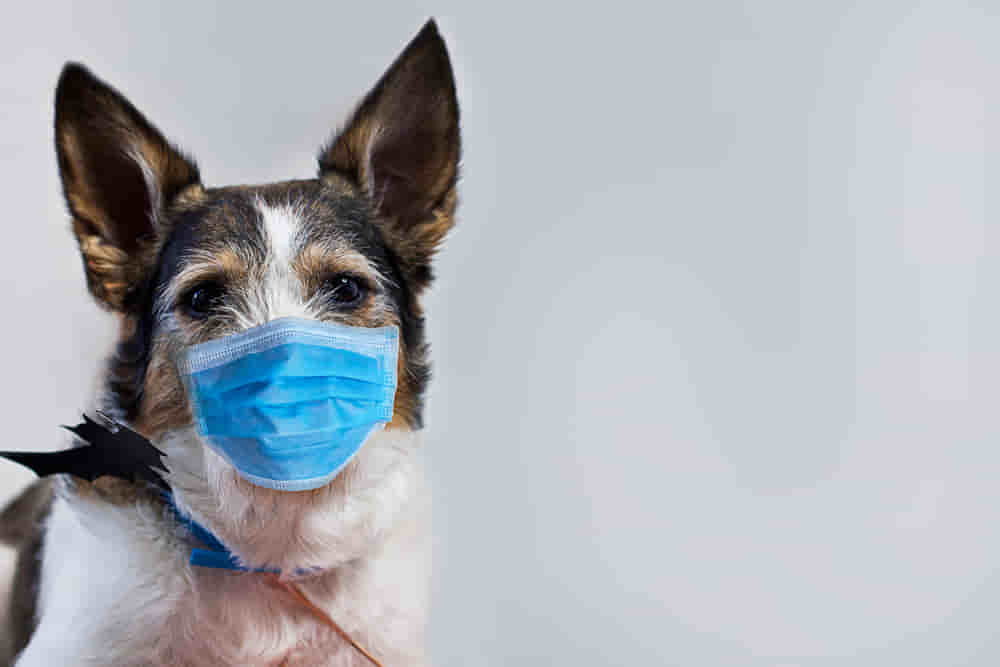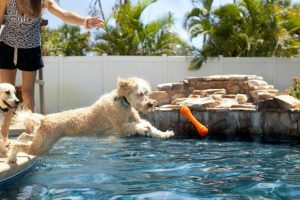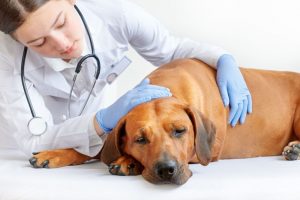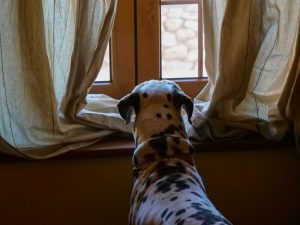Hay fever sufferers know that pollen levels tend to be higher in the Summer months, but dog owners may not be aware that dogs can suffer from hay fever too, just like humans.
To provide guidance on this matter, I have spoken exclusively with Dr Linda Simon, an in-house Veterinary surgeon at Pooch & Mutt, who has shared vital advice on spotting the signs that your dog might be suffering and how you can relieve them of their symptoms, including:
- Walk early in the morning
- Mow your lawn
- Keep doors and windows shut
- Increase washing and grooming
- Keep their bedding clean
Dog pollen allergies come about in the same way that we develop allergies – by coming into contact with pollen granules released by plants. It can start at any age but typically develops in early life.
Whilst we may suffer from a runny nose, watery eyes or a fit of sneezing, hay fever in dogs is different. Here are vital signs to look out for to ensure your pup is not in any discomfort and can live their best life through to the late Summer months:
The Signs & Symptoms
- All-Over-Scratching
- Red, sore or flaky skin
- Runny eyes and nose
- Frequent sneezing, coughing or wheezing
How to Relieve Hay Fever Symptoms
The best way to naturally relieve hay fever symptoms in your pooch is to limit their exposure to pollen. This may be difficult if you live in the countryside, but here are a few things you can try to help manage the symptoms:

- Go for a walk early in the morning. Schedule walks and outdoor activities for early mornings and late nights when the pollen count is lower due to cooler temperatures. Keep your dog on a leash in grassy areas to prevent them from rolling around and getting covered in pollen. Plan your walks to avoid areas with abundant weeds, woodland, or grasslands where pollen concentration may be higher.
- Expose your puppy to a range of pollen. Research suggests that exposing your dog to a range of pollen like in grass, trees, and plants, when they are young can help them build immunity to developing hay fever symptoms.
- Mow your lawn. Mow your grass in your garden regularly to keep it short. Keeping the grass short can also prevent grass seed injuries where seeds attach themselves to your dog’s fur and, when undetected, can burrow into the skin.
- Keep doors and windows shut. During hay fever season, keep windows and doors in your home shut whenever possible. This will help minimise the indoor pollen count and give your dog some relief.
- Increase their washing and grooming. After a walk, gently wipe your dog to remove any pollen from their paws, fur, or face. Regular brushing will also help remove pollen from their skin, even if you can’t see it. If it’s a particularly hot day, and your dog is a fan of the garden hose, you can also hose them down to wash away pollen.
- Regularly wash your dog’s bedding and vacuum the areas they frequent the most. Washing our bedding regularly and keeping the house clean is something humans do when suffering from hay fever, but don’t forget about your dog’s bedding too. Keeping this clean and any areas in the house they spend a lot of time in will help reduce allergens in the house.
- Consider allergy testing . If your dog is really suffering, it might be time to consider allergy testing. This is when your veterinarian examines your dog to determine the root cause of skin irritation, infections and discomfort. They may also recommend testing for specific allergens. Depending on the outcome, they may suggest immunotherapy – a treatment where your dog is administered with small doses of the allergen on a regular basis to reduce the symptoms of allergies, which can even potentially result in a permanent cure.
- Do not give your dog antihistamines without speaking to your vet first. While hay fever in dogs cannot be cured, there are ways to manage their symptoms. Contact your vet for proper guidance, especially if your dog requires medical assistance. Your vet may recommend treatments such as topical shampoos, skin creams, sprays, ear and eye drops, or even steroids for severe cases. It’s important to note that antihistamines or Piriton for humans are not always effective for dogs and can be toxic. Only administer them under the supervision of your vet. Always follow your vet’s advice to ensure a worry-free and enjoyable summer with your furry companion.






